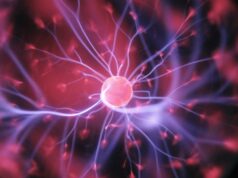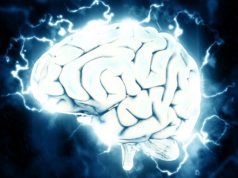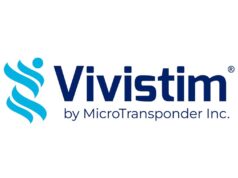
Combining brain stimulation with intense physical rehabilitation helped stroke survivors recover movement in their arms and hands, and maintain these improvements for one year, within a study presented at the International Stroke Conference (ISC; 7–9 February, Phoenix, USA).
“The recovery of arm and hand function after a stroke often stalls or even declines, leaving many patients with chronic motor deficits that limit their independence and quality of life,” said the study’s lead author Teresa Kimberley (Massachusetts General Hospital [MGH] Institute of Health Professions, Boston, USA). “New treatments that can boost the benefits of physical rehabilitation are desperately needed.”
Vagus nerve stimulation (VNS)—the neuromodulation modality deployed in this study—was approved by the US Food and Drug Administration (FDA) in 2021 for the treatment of moderate-to-severe upper-extremity motor function deficits associated with chronic stroke.
“This is the first time that brain stimulation combined with rehabilitation therapy for stroke is available outside of a clinical trial,” Kimberley added. “It could set the stage for even more advancements in recovery from other impairments beyond the arm. This is a watershed moment for rehabilitation science.”
In the VNS-REHAB pivotal trial, a total of 108 patients who had a stroke resulting in moderate-to-severe upper-extremity impairment were divided into two groups—a control group and an experimental group—and completed six weeks of in-clinic, intense rehabilitation paired with active or sham VNS. All participants were implanted with a nerve stimulation device—specifically, the Vivistim system (MicroTransponder)—and then randomised to receive either ‘real’ stimulation, or sham stimulation whereby the device was only turned on for a few pulses.
The in-clinic therapy was followed by a three-month home exercise programme for both groups. The active VNS group continued the home exercise programme for a year. After the six-week period of sham stimulation, the control group crossed over and received six weeks of active VNS followed by a year of the home exercise programme. Before and after these stimulation and rehabilitation therapies, motor function was assessed with the Fugl-Meyer Assessment-Upper Extremity (FMA-UE) index and the Wolf Motor Function Test.
The final study results represent outcomes for arm and hand function in 74 stroke survivors after one year of physical rehabilitation treatment. Data were unavailable for the remaining 34 participants—mainly due to the effects of the COVID-19 pandemic.
The researchers’ analysis found that, at one year, upper-limb function improved by 5.3 points on the FMA-UE index and by 0.51 points in the Wolf Motor Function Test when compared to baseline. In addition, VNS therapy improved hand and arm function by 2–3 times more than intense rehabilitation alone.
“The pairing of rehabilitation therapy with vagus nerve stimulation likely helps the brain strengthen new neural pathways—like building a bridge to bypass a damaged area,” Kimberley said. “These long-term, pivotal results mirror our long-term results from an earlier pilot study where we found that patients continue to improve or maintain their gains up to three years after starting vagus nerve stimulation therapy paired with rehabilitation. As a clinician, it is surprising to see someone with chronic stroke—stroke that in many ways is a progressive disease—continue to improve and not show a decline.”
Limitations of the present study included its small sample size and lack of details about the rehabilitation therapy regimens followed by each participant over the one-year period, which were variable. Future studies and an ongoing clinical registry are also set to explore the long-term impact of active VNS in real-world settings.
“Often, after a stroke, people don’t seek additional treatment, thinking that their current impairments are permanent. This is not true! Paired vagus nerve stimulation opens a new avenue and new hope for these patients. I’m also excited about future research that will investigate vagus nerve stimulation paired with rehabilitation for other conditions, such as gait and speech impairments after stroke,” Kimberley concluded.
“These are encouraging findings,” added Joel Stein (Columbia University, New York, USA), chair of the writing group for the American Heart Association/American Stroke Association’s (AHA/ASA) 2021 Clinical Performance Measures for Stroke Rehabilitation, who was not involved in the study. “These results demonstrate the durability of the effects of vagus nerve stimulation—an important finding that supports the use of this modality to enhance recovery post-stroke. There is some evidence for lasting improvement with continued use outside of a formal exercise programme, which is intriguing, although further research is needed to confirm this finding and clarify who is likely to experience ongoing improvements.”










